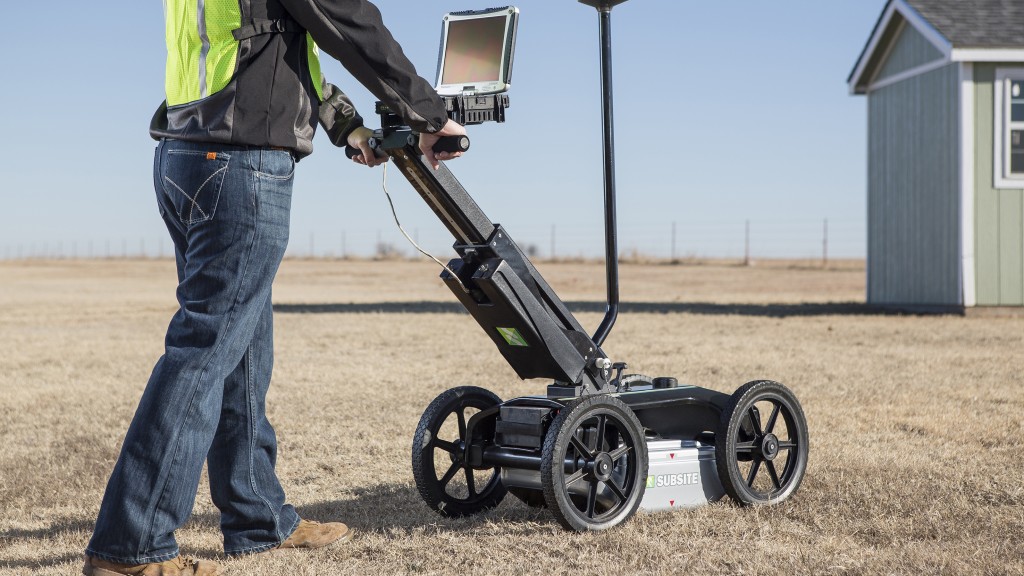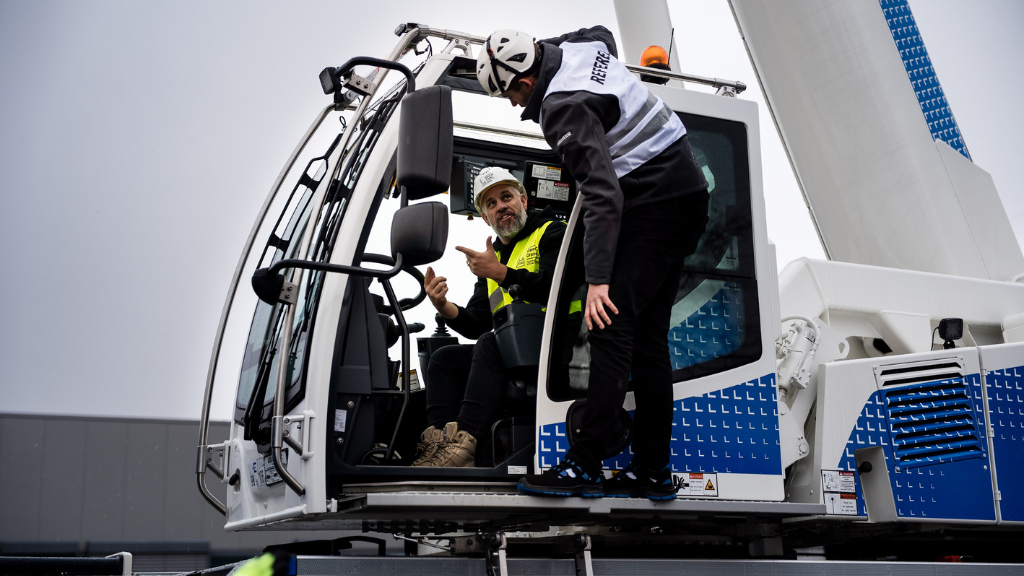What lies beneath? Locating tools take the mystery out of buried utilities and underground obstacles

Utility locating tools and GPR systems are vital pieces of equipment to aid contractors in mapping out buried utilities and underground obstacles. We asked experts from Subsite Electronics and Vermeer MV Solutions what to look for when choosing a utility locating tool or GPR system so that you can have the most accurate information the next time you dig.
Key features for accurate results
According to Jake Jeffords, director of marketing and global accounts, Vermeer MV Solutions, "To get the best results in a variety of environments, contractors should choose a locator with multiple frequencies." The benefits of different frequencies depends on the type of locator.
Don Dillon, key account sales manager for Subsite Electronics, said that "low-frequency options provide the most accurate results and high-power transmitters also enhance low-frequency performance. A transmitter with multi-meter devices also provides a key component (Amp/Volt/Ohm) which is used to determine any issues with the utility itself (e.g. opens, shorts) and is ultimately used to decide if a utility is locatable or not."
"Multiple-frequency locators allow the operator to adjust the frequency to the type of line they are trying to locate," Jeffords said. "Locating at a lower frequency reduces the chance the receiver will pick up a signal from a nearby line, allowing for a more accurate locate of the correct line. Multiple frequency locators are ideal for crowded underground conditions."
According to Dillon, Subsite Electronics' Ambient Interference Measurement (AIM) feature will determine if there is any outside interference such as power lines (overhead or buried) or towers, radio towers, cell towers, microwave towers, or other utility locators using the same active locate frequency. He noted that interference is a common problem with locators and often is not and cannot be detected by most locators.
"Failure to identify interference is a key reason for mislocates and damages," Dillon said. "Multi-frequency locators provide solutions to many forms of interference."
Dillon also noted a number of advantages to GPR systems. "GPS connectivity allows you to see your path and marks in real-time as you scan, and the wireless connection allows you to download maps such as Google Earth."
He added that a GPR system locates both metallic and non-metallic pipes and cables to allow one-pass locates at depths up to 19.7 feet, depending on soil condition, and a dual-frequency antenna simultaneously sweeps in two frequencies; this allows the operator to see both deep and shallow objects simultaneously.
Durability is also very important, according to Jeffords. The utility locator needs to be able to withstand tough jobsite conditions. "Durability is key because contractors take equipment in and out of a truck on a daily basis and, unfortunately, the locator may not be handled with absolute care."
Ground conditions
According to Dillon, "Ground conditions can have a dramatic effect on utility locators. Drier soil conditions (such as sandy soil) result in poor ground conditions which result in higher impedance which in return affects the locator performance greatly."
Jeffords said that ground conditions can be a concern during passive locating (a general sweep of the area). "Passive locating should only be employed at the beginning of a project to scan the jobsite for utilities where access points are unknown and as a final step after utilities are located to ensure no utilities were missed," he said.
"For best results, operators should perform active locating by directly connecting to the utility being located."
Training
"The typical training process would consist of understanding the basics of signals and frequencies. Most multi-frequency utility locators have similar functions, but understanding the ‘101 Basics' makes a difference in the output of success," said Jeffords.
According to Dillon, most utilities and contract locating companies have stringent training and test procedures. "Training for utility locators generally involves one to three weeks of informal classroom training (theory, best practices and [Dig Safe] guidelines), followed by several weeks of field training which in many cases involves additional field training with a mentor."
Jeffords added, "Just like any technology, having someone use the same device over and over will give the operator more confidence in an accurate locate which in turn will make the entire jobsite safer and more productive."
Subsite Electronics UtiliGuard 2
The UtiliGuard 2 combination of automatic real-time data capture, performance analytics information and integrated GPS provides oversight/proof of locator field activity to improve work quality, accuracy and reliability of locate activities; ensures compliance with company standard operating procedures and performance expectations; and enables the creation of initiatives that can decrease utility strikes and increase productivity.
Apple and Android apps securely transfer data back to the office from the field for immediate availability and wireless locator configuration management and software updates minimize downtime and maximize performance.
Automatic integrated data capture provides information that can be used to prove or track performance, compare with benchmarks and provide actionable outcomes to help increase quality, reduce cable strikes and increase productivity across multiple crews.
Vermeer Verifier G3
With the Verifier G3, users can expect a durable design with antennas mounted in rubber isolators to stand up to the toughest conditions. In addition to the separate peak and null locating screens found on the previous models, the G3 features a combination screen eliminating the need for toggling between screens.
Dual functionality allows users to engage the semiautomatic gain on congested, urban jobsites where signal distortion is a common challenge, and use the manual gain method when working in less congested areas.
An automatic depth and current measurement index (CMI) has been added. When the user is over a utility line, instead of having to press a button, the estimated depth and CMI will be automatically displayed.
A compass icon provides a straightforward visual representation of a utility's position in reference to the receiver. The icon simplifies the locating process by automatically calculating peak signal and quickly informing the user of the direction of the utility path.
US Radar GPRover
With no base station or control points required, a utility locator can use the GPRover to collect high-accuracy data within +/- 1 inch (5 cm) and map findings in real time. This results in an instant deliverable that can serve as a common point of reference for subsurface infrastructure installation and maintenance contractors.
The GPRover combines the only true triple-frequency range GPR antenna on the market with global GPS integration powered by John Deere's Navcom Starfire system.
While scanning, the antenna emits three separate signal ranges at low-, medium- and high-frequency outputs. This generates three unique datasets simultaneously that can be analyzed and cross-compared for further accuracy. The operator can image, map or export findings as multiple file types for future use.
The GPRover features patented tilt-correction technology that automatically compensates for slope and cross-slope of the GPR and GPS antennas to increase overall accuracy. The GPR antenna also auto-calibrates to surrounding soil conditions to reduce signal loss as much as possible.
Field data collected by the GPRover may be saved and exported in most common file formats. Using advanced post-processing software, the user can also create 3D images of their data or map findings through third-party platforms like Google Earth.
GSSI UtilityScan
UtilityScan is ideal for efficiently identifying and marking the location and depth of subsurface features. With a robust new wireless 350 MHz antenna that can handle required data rates, UtilityScan is ruggedly built to withstand challenging field conditions. UtilityScan uses patented HyperStacking technology for unparalleled data quality and has an integrated LineTrac system. It works up to maximum depths of 10 metres (35 feet).
Fully integrated, the SIR 4000 control unit on display provides a 10.4-inch high-definition LED display, a simple user interface, plug-and-play GPS integration, and Wi-Fi enabled data transfer functionality. Exclusive features include a casted aluminum chassis that offers superior temperature stability and an impact-resistant design that combined delivers a full IP 65 rated unit, which stands up to tough jobsite conditions.
Sensors & Software LMX
Sensors & Software Inc. has released new data acquisition software for LMX100 and LMX200 GPR systems. LMX systems now have four more predefined filter levels to remove flat-lying reflections and increase the detectability of hyperbolic responses from utilities.
DynaT, the company's Dynamic Target enhancement features that optimized views of small, medium and large targets, previously only available in the LMX200 is now on the LMX100.
New features have been introduced for the LMX200. Obstacle Avoidance guides the user through collecting a grid around an obstacle. Add flags during grid data collection and display interpretations on depth slices in the field. There are also new MapView enhancements offering a more powerful and meaningful bird's eye view of the survey site displaying depth slices from multiple grids simultaneously.
New features for LMX200 users with an external GPS include SplitView Real-time LineView and MapView displays on one screen. New MapView enhancements include a real-time position indicator so users know where they are in the survey area with respect to the targets found and marked with field interpretations and flags.







